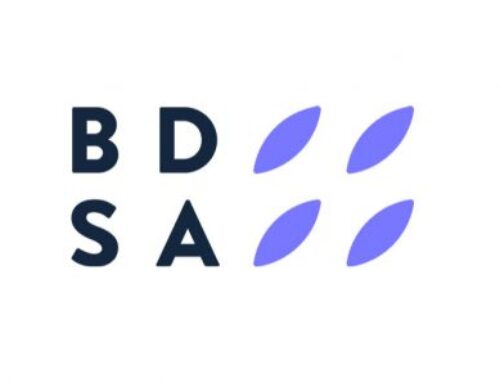Meta projected 10% of 2024 revenue came from scams and banned goods, Reuters reports
November 6, 2025
Meta has been making billions of dollars per year from scam ads and sales of banned goods, according internal Meta documents seen by Reuters.
The new report quantifies the scale of fraud taking place on Meta’s platforms, and how much the company profited from them.
Per the report, Meta internal projections from late last year said that 10% of the company’s total 2024 revenue would come from scammy ads and sales of banned goods — which works out to $16 billion.
Discussions within Meta acknowledged the steep fines likely to be levied against the company for not stopping the fraudulent behavior on its platforms, and the company prioritized enforcement in regions where the penalties would be steepest, the reporting found. The cost of lost revenue from clamping down on the scams was weighed against the cost of fines from regulators.
The documents reportedly show that Meta did aim to significantly reduce the fraudulent behavior, but cuts to its moderation team left the vast majority of user-reported violations to be ignored or rejected.
Meta spokesperson Andy Stone told Reuters the documents were a “selective view” of internal enforcement:
“We aggressively fight fraud and scams because people on our platforms don’t want this content, legitimate advertisers don’t want it, and we don’t want it either.”
Per the report, Meta internal projections from late last year said that 10% of the company’s total 2024 revenue would come from scammy ads and sales of banned goods — which works out to $16 billion.
Discussions within Meta acknowledged the steep fines likely to be levied against the company for not stopping the fraudulent behavior on its platforms, and the company prioritized enforcement in regions where the penalties would be steepest, the reporting found. The cost of lost revenue from clamping down on the scams was weighed against the cost of fines from regulators.
The documents reportedly show that Meta did aim to significantly reduce the fraudulent behavior, but cuts to its moderation team left the vast majority of user-reported violations to be ignored or rejected.
Meta spokesperson Andy Stone told Reuters the documents were a “selective view” of internal enforcement:
“We aggressively fight fraud and scams because people on our platforms don’t want this content, legitimate advertisers don’t want it, and we don’t want it either.”
More Tech
Google wants to invest even more money into Anthropic, with the search giant in talks for a new funding round that could value the AI startup at $350 billion, Business Insider reports. That’s about double its valuation from two months ago, but still shy of competitor OpenAI’s $500 billion valuation.
Citing sources familiar with the matter, Business Insider said the new deal “could also take the form of a strategic investment where Google provides additionalcloud computing servicesto Anthropic, a convertible note, or a priced funding round early next year.”
In October, Google, which has a 14% stake in Anthropic, announced that it had inked a deal worth “tens of billions” for Anthropic to access Google’s AI compute to train and serve its Claude model.
Rani Molla11/5/25
Apple to pay Google $1 billion a year for access to AI model for Siri
Apple plans to pay Google about $1 billion a year to use the search giant’s AI model for Siri, Bloomberg reports. Google’s model — at 1.2 trillion parameters — is way bigger than Apple’s current models.
The deal aims to help the iPhone maker improve its lagging AI efforts, powering a new Siri slated to come out this spring.
Apple had previously been considering using OpenAI’s ChatGPT and Anthropic’s Claude, but decided in the end to go with Google as it works toward improving its own internal models. Google, which makes a much less widely sold phone, the Pixel, has succeeded in bringing consumer AI to smartphone users where Apple has failed.
Google’s antitrust ruling in September helped safeguard the two companies’ partnerships — including the more than $20 billion Google pays Apple each year to be the default search engine on its devices — as long as they aren’t exclusive.
Apple had previously been considering using OpenAI’s ChatGPT and Anthropic’s Claude, but decided in the end to go with Google as it works toward improving its own internal models. Google, which makes a much less widely sold phone, the Pixel, has succeeded in bringing consumer AI to smartphone users where Apple has failed.
Google’s antitrust ruling in September helped safeguard the two companies’ partnerships — including the more than $20 billion Google pays Apple each year to be the default search engine on its devices — as long as they aren’t exclusive.
Rani Molla11/5/25
Netflix creates new made-up metric for advertisers
It’s not quite WeWork’s community-adjusted EBITDA, but it’s also not quite a real number: Netflix announced today that it has 190 million “monthly active viewers” for its lower-cost ad-supported tiers. The company came up with the metric by measuring the number of subscribers who’ve watched “at least 1 minute of ads on Netflix per month” and multiplying that by what its research assumes is the number of people in that household.
It builds on Netflix’s previous attempt at measuring ad viewership with monthly active users, which is the number of profiles that have watched ads (94 million as of May). The MAV measurement, of course, is a lot bigger, and bigger numbers are more attractive to advertisers, who are spending more and more on streaming platforms.
“After speaking to our partners, we know that what they want most is an accurate, clear, and transparent representation of who their ads are reaching,” Netflix President of Advertising Amy Reinhard explained in a press release. “Our move to viewers means we can give a more comprehensive count of how many people are actually on the couch, enjoying our can’t-miss series, films, games, and live events with friends and family.”
Netflix last reported its long-followed and more easily understood paid membership numbers at the beginning of the year, when it crossed 300 million.
It builds on Netflix’s previous attempt at measuring ad viewership with monthly active users, which is the number of profiles that have watched ads (94 million as of May). The MAV measurement, of course, is a lot bigger, and bigger numbers are more attractive to advertisers, who are spending more and more on streaming platforms.
“After speaking to our partners, we know that what they want most is an accurate, clear, and transparent representation of who their ads are reaching,” Netflix President of Advertising Amy Reinhard explained in a press release. “Our move to viewers means we can give a more comprehensive count of how many people are actually on the couch, enjoying our can’t-miss series, films, games, and live events with friends and family.”
Netflix last reported its long-followed and more easily understood paid membership numbers at the beginning of the year, when it crossed 300 million.
Latest Stories
Sherwood Media, LLC produces fresh and unique perspectives on topical financial news and is a fully owned subsidiary of Robinhood Markets, Inc., and any views expressed here do not necessarily reflect the views of any other Robinhood affiliate, including Robinhood Markets, Inc., Robinhood Financial LLC, Robinhood Securities, LLC, Robinhood Crypto, LLC, or Robinhood Money, LLC.
- Privacy Notice
- Disclosures
- Terms and Conditions
- Editorial Standards
- Masthead
- Your Privacy Choices
- Advertising Disclaimers
©2025 Sherwood Media, LLC
Search
RECENT PRESS RELEASES
Related Post



